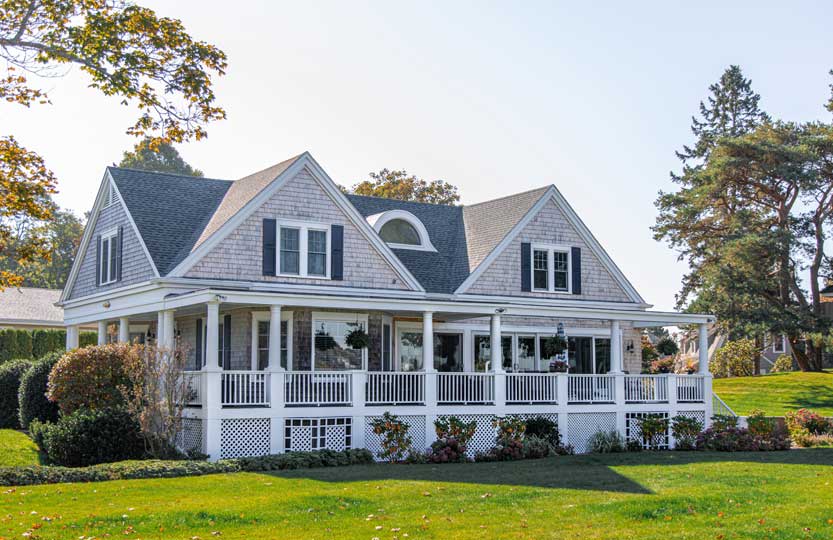The Federal Reserve’s moves to stem inflation over the last year and change have been historic. Eleven rate hikes since March 2022 have raised the benchmark short-term by 5 percentage points, marking the most aggressive action the Fed has taken in 40 years.
The central bank’s efforts are primarily focused on beating back the pandemic-related inflation that reached 9.1% a year ago for core consumer prices. The Fed’s inflation target is 2%.
Many observers reasoned that the Fed’s rate hikes would spill over to the housing market by pushing up mortgage rates, which certainly has happened. The pandemic days of 2-3% for a 30-year-fixed rate mortgage have turned into 30-year mortgage rates that now hover around 7%.
The thought was that all of this would cool some of the demand for homes in the U.S. and slow down the acceleration of home prices that has been driven by heavy competition among buyers. Some hoped this would lead to considerable price drops after they had increased at a record pace with the low mortgage rates driving demand among buyers and people looking to refinance.
The Fed’s policies have effectively frozen home prices at a range that’s still comparatively high relative to the period before the pandemic. That’s mainly because there remains a shortage of existing homes for sale. The low mortgage rates that were available during the pandemic also now discourage would-be sellers from listing their homes, since they wouldn’t be able to get mortgages on terms that favorable any time soon.
Last fall, Fed Chairman Jerome Powell tempered expectations for what he meant by a “reset” of the housing market.
“When I say reset, I’m not looking at a particular specific set of data,” Powell said, via Yahoo News. “What I’m really saying is that we’ve had a time of a red-hot housing market all over the country, where famously houses were selling to the first buyer at 10% above the ask even before seeing the house.”
Powell said the rate at which homes were going on the market during the pandemic was “unsustainable,” and that the Fed’s hope was to see a deceleration in home prices. The Fed was keenly aware of how quickly homes were coming off the market, how many buyers were submitting offers, and how people were commonly putting in offers above asking price without even seeing homes.
But to the extent that the Fed’s moves did have a slowing impact on the housing market over the last year, the National Association of Realtors now sees indications that this trend is changing, according to Realtor Magazine.
“With consumer price inflation calming close to the Federal Reserve’s desired conditions, mortgage rates look to have topped out,” chief economist Lawrence Yun said. “Given the ongoing job additions, any meaningful decline in mortgage rates could lead to a rush of buyers later in the year and into the next.”
More buyers are now facing multiple offer situations again, based on NAR data. And median existing-home sales prices in June reached their second highest on record in the last two decades.
From the vantage point of realtors, the Fed’s actions over the last year have stemmed the frantic competition for homes that had driven higher sales prices and bigger commissions during the pandemic. Yun characterized the last year as a “housing recession,” a description that might make some buyers balk.
Although some of the recent uptick demand for homes is seasonal, NAR expects mortgage rates to about 6.4% by the end of the year and about 6% in 2024.
“The recovery has not taken place, but the housing recession is over,” says Lawrence Yun, NAR’s chief economist. “The presence of multiple offers implies that housing demand is not being satisfied due to a lack of supply. Homebuilders are ramping up production and hiring workers.”
All discussions about the state of the U.S. housing market return to the issue of low inventory — particularly existing homes. Houses under construction made up 60.2% of U.S. inventory at the end of June, with other homes yet to be started accounting for 23.1%, Reuters reported. New home sales slowed a bit in June, but are up 23.8% year-over-year.
The long-term picture of housing continues to be dictated mainly by supply, with higher mortgage rates serving to cool demand only enough to keep prices from reaching a point at which both buyers and sellers end up with too few options. Stabilizing the housing market may be the precursor to a more sustainable equilibrium as supply increases. Until mortgage rates settle a bit lower, many home owners likely will choose not to sell.
Photo credits Todd Kent/Unsplash.com


